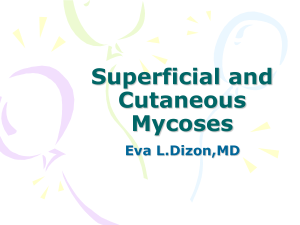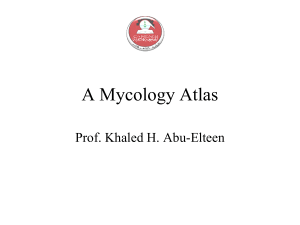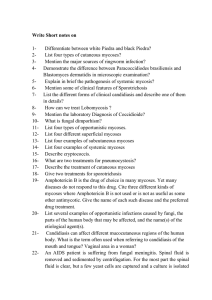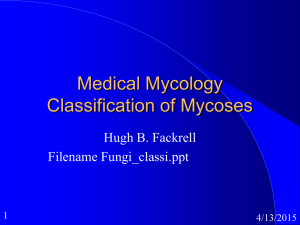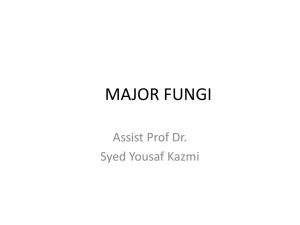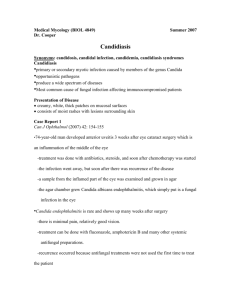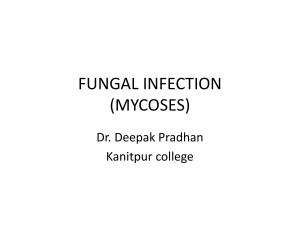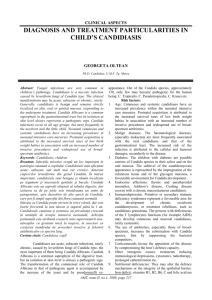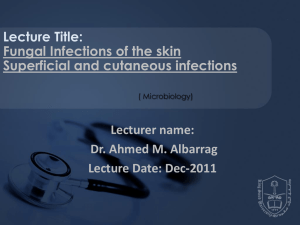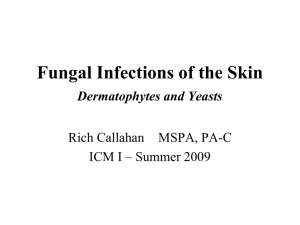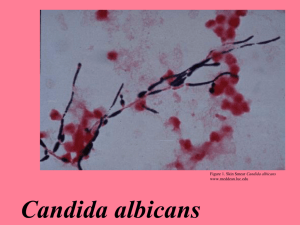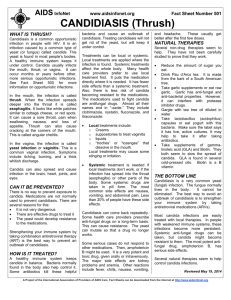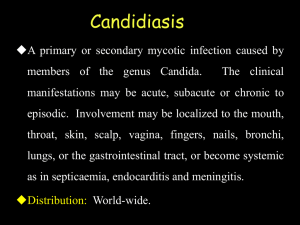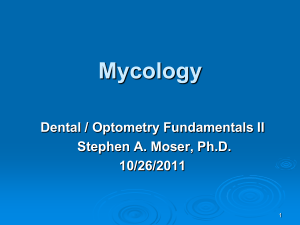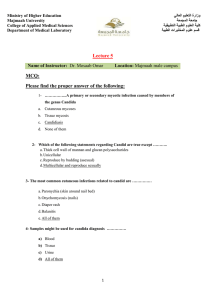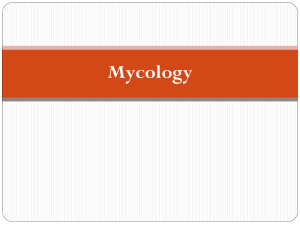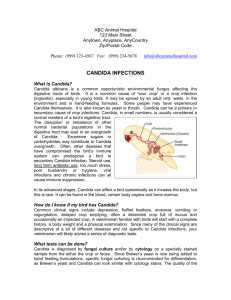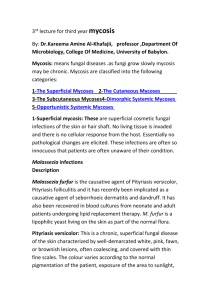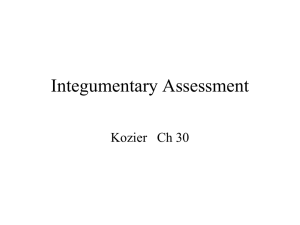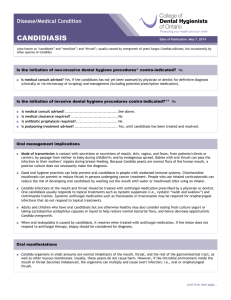Fungal diseases (Mycoses)
advertisement
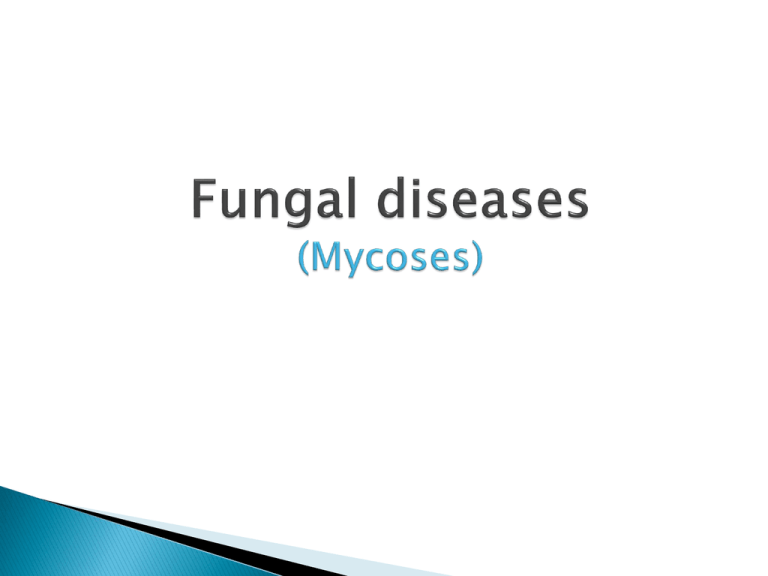
At the end of the lesson, students will be able to: 1. Discuss how fungi cause diseases 2. Compare and contrast superficial, cutaneous, subcutaneous, systemic and opportunistic mycoses in terms of characteristics/definition, example of diseases it may cause and its causative agent and laboratory diagnosis Growth on body surfaces. Invasion of the body. Allergic reactions. Toxins released after ingestion Mycoses: fungal diseases. Tend to be chronic because fungi grow slowly. Fungal diseases are classified into 4 groups: •Superficial mycoses •Cutaneous mycoses •Subcutaneous mycoses •Deep (systemic) mycoses Superficial Cutaneous Definition Infection that do not involve a tissue response Infections of the skin, hair & nails Example & Causative Agent Pityriasis: dermatitis characterized by redness of the skin and itching caused by Malassezia furfur Ringworm(Tinea capitis) Athlete’s foot(Tinea pedis) Jock itch(Tinea cruris) Onychomycoses (Tinea ungium) : nail infections caused by Candida albicans or a dermatophytes Lab Diagnosis Direct Microscopy: 10% KOH is used to digest the skin debris(bottle shaped budding yeast cells) PCR & other molecular methods Culture SDA(Sabourauds dextrose agar medium is used) Creamy colonies appear Favus: destruction of the hair follicle caused by Trichophyton schonleini Direct Microscopy: septate branched hyphae PCR & other molecular methods SDA Honey-combed like thallus(cream colored to Subcutaneous Systemic Definition Infections beneath the skin Infections deep within the body Example & Causative Agent Sporotrichosis: chronic infection of the subcutaneous tissues and adjacent lymphatics characterized by nodular lesions(Sporothrix schenkii) Histoplasmosis (Histoplasma capsulatum): Initial infection in lungs. Later spreads through blood to most organs. Coccidiomycosis (Coccidioides immites): a dimorphic fungus. Resembles tuberculosis Lab Diagnosis Direct Microscopy: Tissue Clinical material- Skin scrapings, sections should be stained using sputum and bronchial washings, Grocott's methenamine cerebrospinal fluid, pleural fluid silver (GMS) and blood, bone marrow, urine Gram stain and tissue biopsies from various Interpretation: Look for small visceral organs. narrow base budding yeast cells 2. Direct Microscopy: Skin scrapings should be (2-5um). examined using 10% KOH and Parker ink or calcofluor white mounts. Exudates and body fluids should be centrifuged and the sediment examined using either 10% KOH FUNGAL DISEASES Opportunistic mycoses: Caused by organisms that are generally harmless unless individual has weakened defenses: ◦ AIDS and cancer patients ◦ Individuals treated with broad spectrum antibiotics ◦ Very old or very young individuals (newborns). Examples: ◦ Aspergillosis: Inhalation of Aspergillus spores. ◦ Yeast Infections or Candidiasis: Caused mainly by Candida albicans. Part of normal mouth, esophagus, and vaginal flora. Candidia albicans ◦ a common unicelluar fungus which is part of the flora of the oral cavity, vagina, and gastrointestinal tract; ◦ They become opportunist especially in immunocompromised people Oral candidiasis (Oral thrush) Classic thrush is characterised by a white, curd-like coating on the tongue or elsewhere in the oral cavity. Stomatitis due to Candida is often associated with painful infection of the lips - and corners of the mouth. Genital or perigenital candidiasis ((vulvo vaginitis) (vulvo)vaginitis due to Candida . Contamination of the vagina with Candida stems from the endogenous endosaprophytic flora of the gastrointestinal tract. Diagnoses ◦ in culture, it grows as blastospores, pseudohyphae, and septate hyphae ◦ candidiasis the collective term for infection involving Candida cutaneous vaginal systemic
